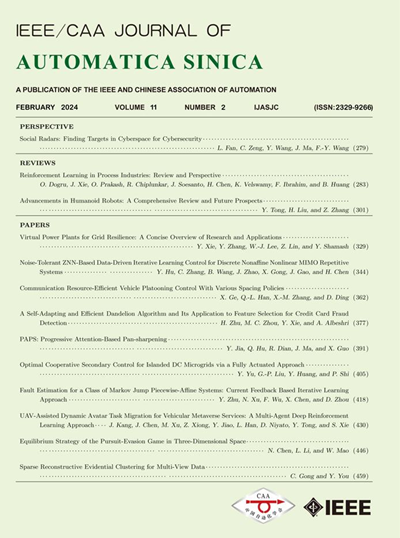Machine Learning-Based Prediction of Depressive Disorders via Various Data Modalities: A Survey
IF 19.2
1区 计算机科学
Q1 AUTOMATION & CONTROL SYSTEMS
引用次数: 0
Abstract
Depression, a pervasive mental health disorder, has substantial impacts on both individuals and society. The conventional approach to predicting depression necessitates substantial collaboration between health care professionals and patients, leaving room for the influence of subjective factors. Consequently, it is imperative to develop a more efficient and accessible prediction methodology for depression. In recent years, numerous investigations have delved into depression prediction techniques, employing diverse data modalities and yielding notable advancements. Given the rapid progression of this domain, the present article comprehensively reviews major breakthroughs in depression prediction, encompassing multiple data modalities such as electrophysiological signals, brain imaging, audiovisual data, and text. By integrating depression prediction methods from various data modalities, it offers a comparative assessment of their advantages and limitations, providing a well-rounded perspective on how different modalities can complement each other for more accurate and holistic depression prediction. The survey begins by examining commonly used datasets, evaluation metrics, and methodological frameworks. For each data modality, it systematically analyzes traditional machine learning methods alongside the increasingly prevalent deep learning approaches, providing a comparative assessment of detection frameworks, feature representations, context modeling, and training strategies. Finally, the survey culminates with the identification of prospective avenues that warrant further exploration. It provides researchers with valuable insights and practical guidance to advance the field of depression prediction.基于机器学习的抑郁症预测:通过各种数据模式:一项调查
抑郁症是一种普遍存在的精神健康障碍,对个人和社会都有重大影响。预测抑郁症的传统方法需要卫生保健专业人员和患者之间的大量合作,为主观因素的影响留下了空间。因此,开发一种更有效、更容易获得的抑郁症预测方法势在必行。近年来,许多研究都深入研究了抑郁预测技术,采用了不同的数据模式,并取得了显著的进展。鉴于这一领域的快速发展,本文全面回顾了抑郁症预测方面的重大突破,包括多种数据模式,如电生理信号、脑成像、视听数据和文本。通过整合来自不同数据模式的抑郁症预测方法,对其优势和局限性进行比较评估,提供一个全面的视角,了解不同模式如何相互补充,以更准确、更全面地预测抑郁症。调查从检查常用的数据集、评估指标和方法框架开始。对于每种数据模式,它系统地分析了传统的机器学习方法以及日益流行的深度学习方法,提供了检测框架、特征表示、上下文建模和训练策略的比较评估。最后,调查最终确定了值得进一步探索的潜在途径。它为研究人员提供了有价值的见解和实践指导,以推进抑郁症预测领域。
本文章由计算机程序翻译,如有差异,请以英文原文为准。
求助全文
约1分钟内获得全文
求助全文
来源期刊

Ieee-Caa Journal of Automatica Sinica
Engineering-Control and Systems Engineering
CiteScore
23.50
自引率
11.00%
发文量
880
期刊介绍:
The IEEE/CAA Journal of Automatica Sinica is a reputable journal that publishes high-quality papers in English on original theoretical/experimental research and development in the field of automation. The journal covers a wide range of topics including automatic control, artificial intelligence and intelligent control, systems theory and engineering, pattern recognition and intelligent systems, automation engineering and applications, information processing and information systems, network-based automation, robotics, sensing and measurement, and navigation, guidance, and control.
Additionally, the journal is abstracted/indexed in several prominent databases including SCIE (Science Citation Index Expanded), EI (Engineering Index), Inspec, Scopus, SCImago, DBLP, CNKI (China National Knowledge Infrastructure), CSCD (Chinese Science Citation Database), and IEEE Xplore.
 求助内容:
求助内容: 应助结果提醒方式:
应助结果提醒方式:


